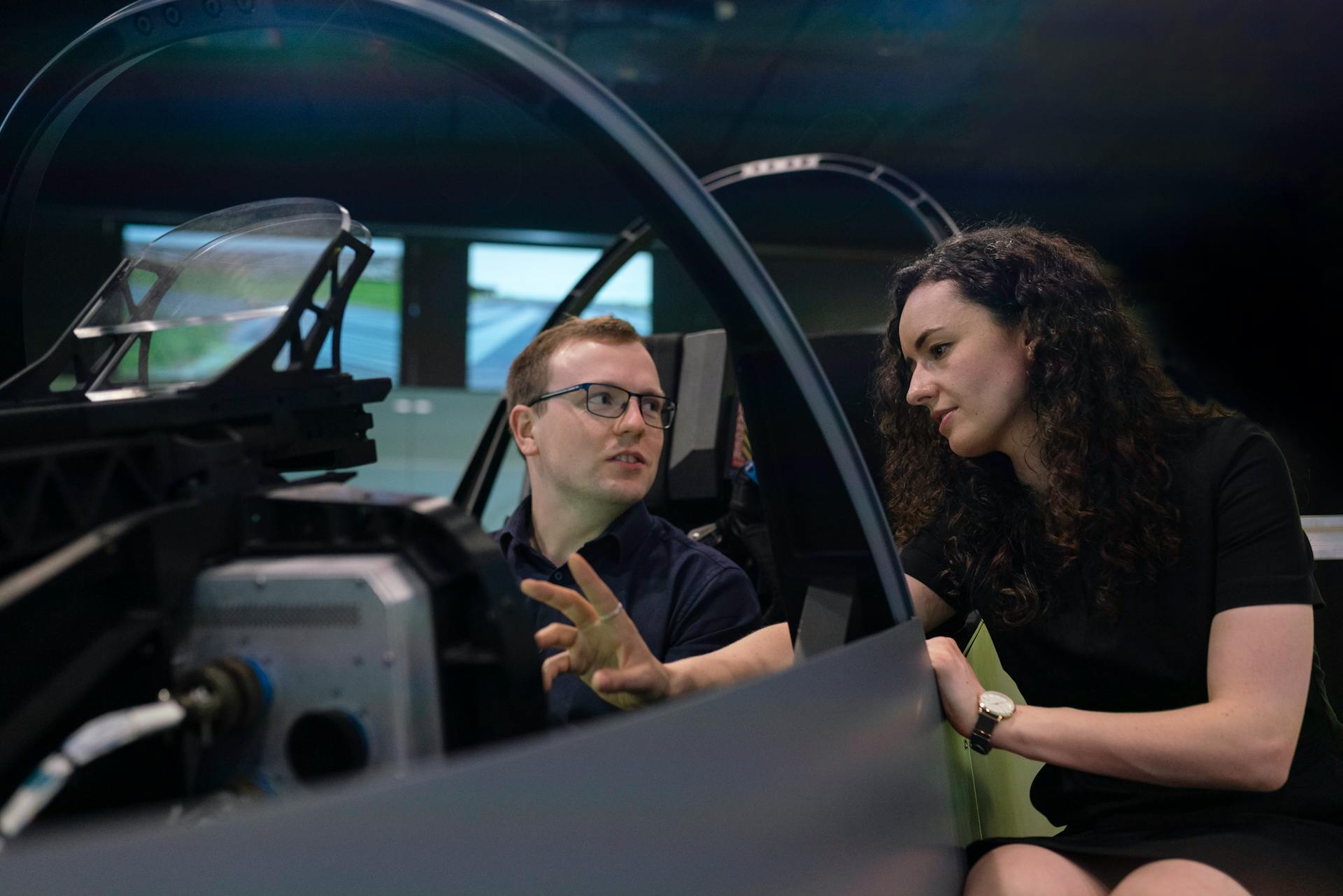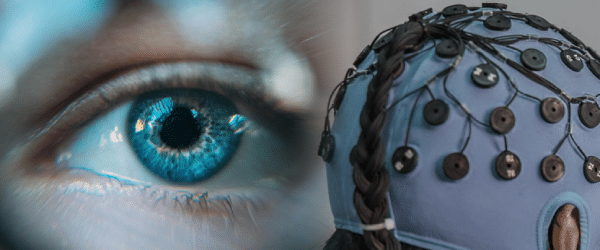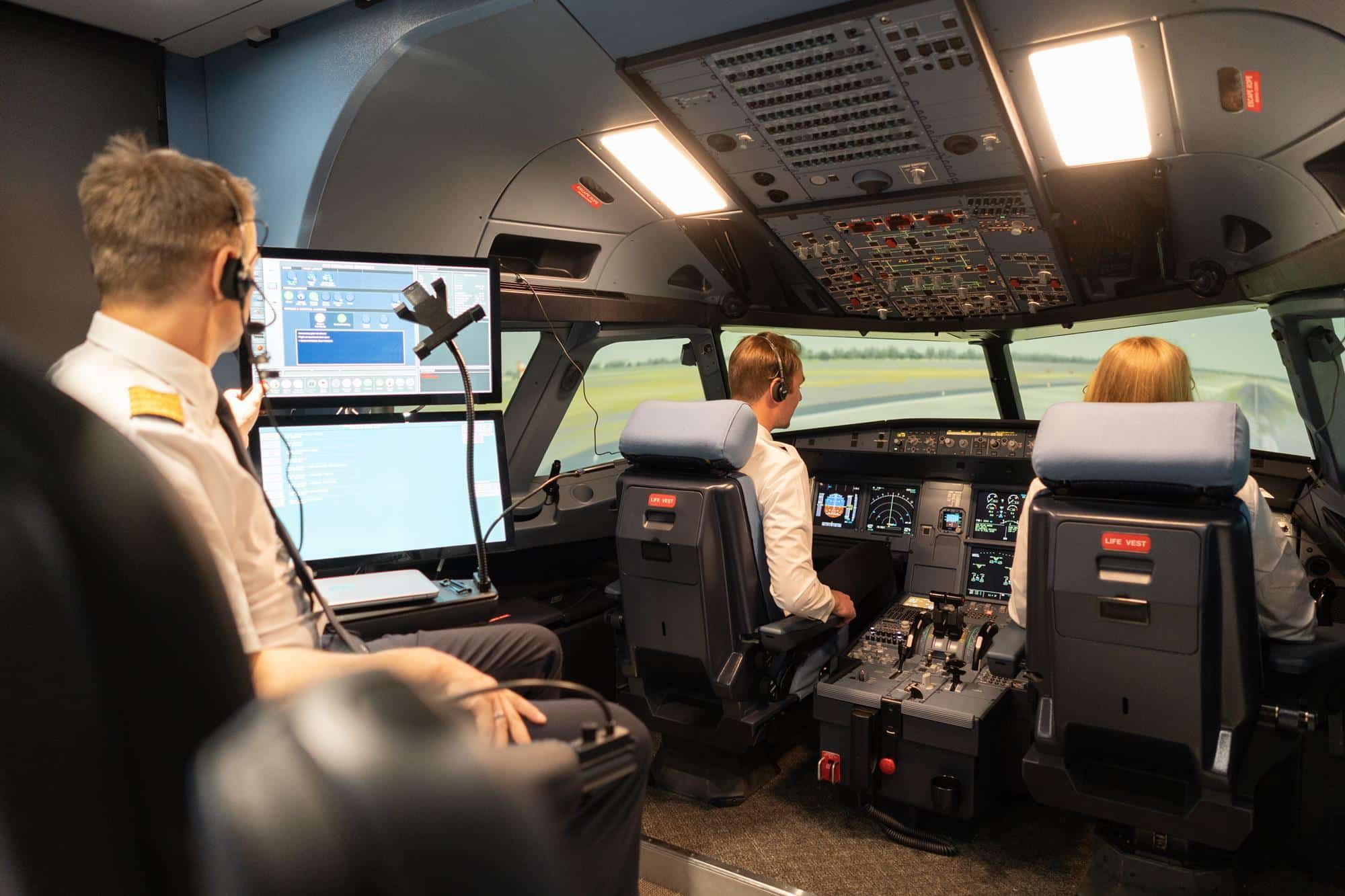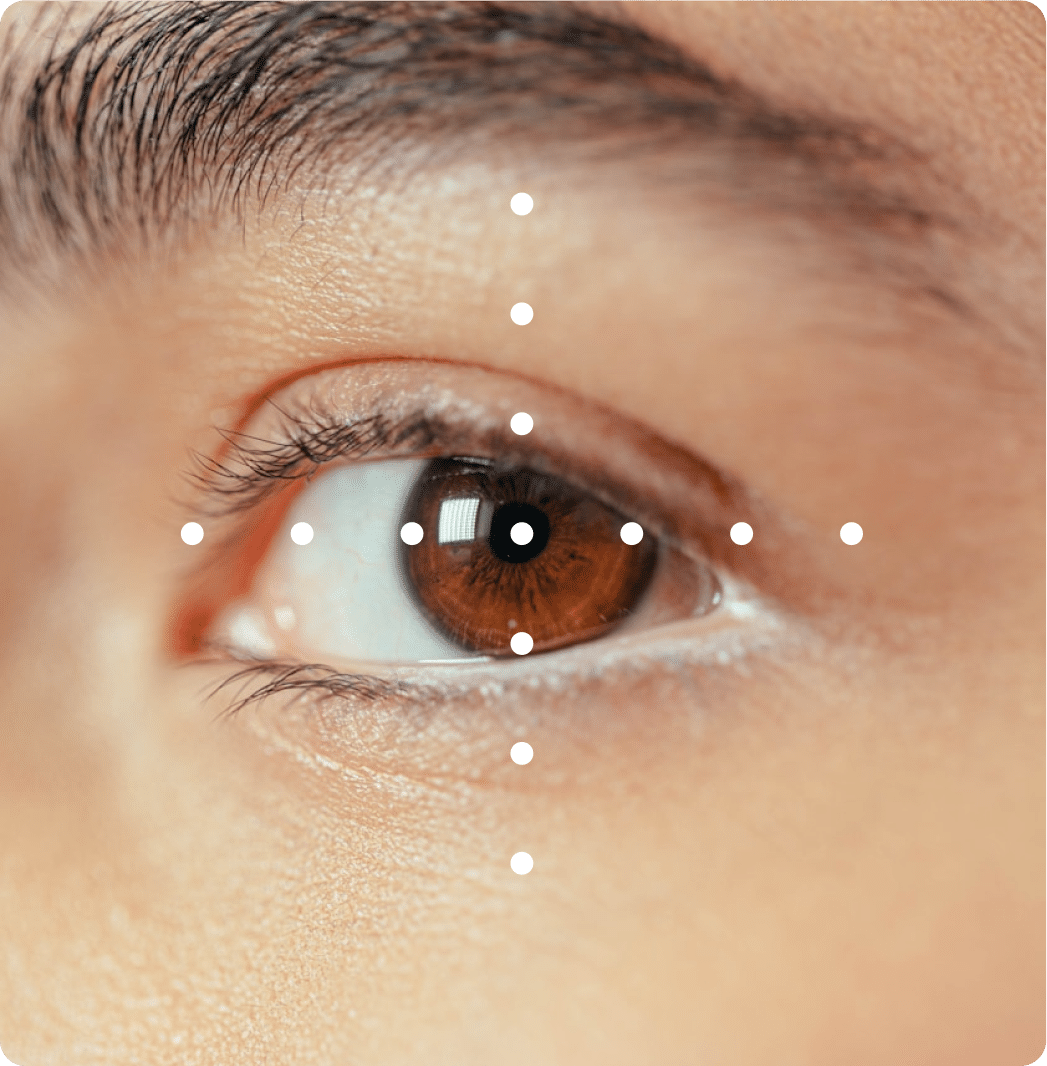Thanks for reaching out
We’re here to help with questions, support, or if want to explore how SOMA’s technology can benefit your business, we’re here to help. Just fill out the form, and our team will get back to you shortly.
Contact
hello@somareality.com05.09.24 - DI Dr. Benedikt Gollan
Cognitive Load Monitoring in Aviation
In aviation, cognitive load refers to the mental effort required to process information, make decisions, and execute actions during flight operations. Pilots must manage multiple tasks simultaneously, from navigating airspace to monitoring flight instruments and communicating with air traffic control. The sheer complexity of flight operations places a significant cognitive demand on pilots, particularly during emergency situations or unfamiliar flight conditions.

Aviation training is an intense and highly demanding process that requires pilots to develop both technical skills and mental acuity to handle complex, high-stakes environments. Ensuring that trainee pilots are cognitively prepared to make split-second decisions under pressure is essential for flight safety.
SOMAREALITY’s eye tracking technology, combined with algorithms for visual attention and conscious perception, offers cutting-edge solutions that monitor pilots’ cognitive and perceptual states in real time, allowing for more effective competency-based training (CBT). By analyzing data such as pupil dilation, gaze patterns, and other eye movements, along with perceptual insights, SOMAREALITY helps aviation professionals optimize training programs and model competency over time.
In this blog, we’ll explore how our eye tracking analytics, along with visual attention and conscious perception algorithms, enable real-time cognitive monitoring, helping to manage cognitive load and enhance overall pilot performance. We’ll also discuss the benefits for our aviation customers who use this technology during training procedures to gain real-time insights and improve safety outcomes.q
The Importance of Cognitive Load in Aviation Training
In aviation, cognitive load refers to the mental effort required to process information, make decisions, and execute actions during flight operations. Pilots must manage multiple tasks simultaneously, from navigating airspace to monitoring flight instruments and communicating with air traffic control. The sheer complexity of flight operations places a significant cognitive demand on pilots, particularly during emergency situations or unfamiliar flight conditions.
Unmanaged cognitive load can lead to errors in judgment, slower reaction times, and, ultimately, safety risks. This is why understanding a pilot’s cognitive load during training is crucial for improving training methods and ensuring that pilots are not overwhelmed by the mental demands of their role.
Eye Tracking and Cognitive Load Management
By utilizing eye tracking technology, trainers can gain valuable insights into how a trainee’s cognitive load shifts throughout different phases of a flight simulation. Pupil dilation, for instance, is a well-known indicator of cognitive load, with larger pupils often signaling increased mental effort. Eye tracking can also reveal where a trainee’s attention is focused, how long they dwell on certain critical elements like instruments or navigation screens, and whether they miss key information under high-pressure conditions.
With these insights, instructors can tailor training to individual needs, offering targeted interventions to help trainees manage their cognitive load more effectively.
Enhancing Competency-Based Training with Eye Tracking Analytics
Aviation training has evolved from traditional methods to more sophisticated competency-based training (CBT), where pilots are assessed based on their ability to demonstrate mastery over specific tasks and skills. CBT emphasizes the continuous development of competency over time, ensuring that pilots are not only trained to pass exams but are also equipped to handle real-world flight challenges.
Real-Time Cognitive Monitoring in CBT
SOMAREALITY’s eye tracking technology plays a pivotal role in enhancing CBT by providing real-time cognitive monitoring. Throughout a training session, our system continuously captures data related to pupil dilation, gaze direction, and fixation points. This data helps instructors assess how trainees process information and react to various flight scenarios, whether in a simulator or during on-ground exercises.
For instance, during a simulated emergency landing procedure, eye tracking can reveal whether a trainee is focusing on critical instruments, such as the altimeter and airspeed indicator, or if their attention drifts to less relevant areas. This information is crucial for trainers, who can immediately provide feedback and adjust the training to ensure that the trainee learns to prioritize key tasks under stress.
Understanding Cognitive Load Through Pupil Dilation
Pupil dilation is one of the most reliable indicators of cognitive load during training. As a pilot’s mental workload increases, their pupils tend to dilate, providing a clear signal that they are under pressure. By tracking pupil dilation throughout a training session, trainers can determine when and where trainees experience cognitive overload, allowing them to intervene when necessary.
For example, during complex flight maneuvers or emergency procedures, significant changes in pupil size may indicate that the trainee is struggling to keep up with the mental demands. This data allows trainers to adjust the pace of the training and provide additional support, helping the trainee develop stronger cognitive resilience over time.
Modeling Pilot Competency Over Time with Eye Tracking
One of the key benefits of eye tracking technology in aviation training is the ability to model a trainee’s competency over time. Rather than relying solely on written exams or flight performance metrics, eye tracking provides a deeper, more nuanced view of how a trainee’s cognitive abilities evolve throughout their training.
Tracking Cognitive Patterns and Skill Development
By capturing data across multiple training sessions, SOMAREALITY’s system allows trainers to identify patterns in eye movements, cognitive load, and attention shifts. This data can be used to model the progression of a trainee’s skills, highlighting areas of improvement and areas where further training is needed.
For example, a trainee might show significant improvement in managing cognitive load during basic maneuvers, but still struggle with attention management during emergency procedures. By analyzing eye tracking data, trainers can pinpoint these specific challenges and provide focused interventions, ensuring the trainee is well-prepared for real-world scenarios.
Personalized Training Feedback Based on Eye Tracking Data
The ability to provide personalized feedback based on eye tracking data is another major advantage of using this technology in aviation training. Each pilot is different, and their cognitive strengths and weaknesses vary. Eye tracking data helps instructors offer individualized training that caters to each pilot’s specific needs, ensuring that every trainee reaches their full potential.
For example, if eye tracking data reveals that a particular trainee struggles with cognitive load during high-pressure landing scenarios, the trainer can adjust the training program to include more practice in this area, using real-time feedback to guide the trainee toward better performance.
Integrating Visual Attention and Conscious Perception in Training
In addition to cognitive monitoring, SOMAREALITY’s advanced algorithms for visual attention and conscious perception provide even deeper insights into a trainee’s mental and perceptual states.
Visual Attention: Measuring What Matters
Visual attention refers to where a pilot directs their focus during flight training. Understanding visual attention is critical because pilots need to focus on relevant flight instruments, controls, and environmental cues while ignoring distractions. SOMAREALITY’s eye tracking technology captures and analyzes data related to visual attention, showing whether pilots are focusing on critical areas or missing essential cues during high-pressure situations.
For example, in an emergency situation simulation, it’s vital that the pilot focuses on key flight instruments, like altitude or speed, rather than peripheral or irrelevant information. If the data reveals that the trainee is not focusing their visual attention where necessary, trainers can intervene to help develop better situational awareness and prioritization skills.
Conscious Perception: Understanding What Pilots Actually Process
While visual attention measures where the pilot looks, conscious perception goes a step further by analyzing what the pilot actually processes and understands from what they’re seeing. Sometimes, pilots may look at important information but fail to consciously register or interpret it correctly, especially under stress.
Our conscious perception algorithm analyzes whether pilots are truly aware of the information they are visually engaging with. This is essential for improving decision-making and situational awareness during flight training. For example, a pilot might glance at the fuel gauge but fail to consciously process a critical drop in fuel levels during a crisis. Understanding this gap between seeing and processing helps trainers ensure pilots are fully aware of the information they need to act on.
By incorporating insights from both visual attention and conscious perception, SOMAREALITY’s technology offers a comprehensive view of how well a trainee is managing their cognitive and perceptual demands. This leads to better, more targeted training interventions and improved overall competency.
The Benefits of Eye Tracking Analytics, Visual Attention, and Conscious Perception in Aviation Training
The use of eye tracking analytics, combined with visual attention and conscious perception, offers several key benefits for aviation training, both in terms of improving pilot competency and enhancing overall flight safety.
Identifying Cognitive Overload
One of the most significant benefits is the ability to identify cognitive overload in real time. Eye tracking data can reveal when a trainee’s mental workload exceeds their capacity to process information, which can lead to poor decision-making and mistakes during flight operations. By identifying cognitive overload early, trainers can adjust the training to help the trainee manage their mental workload more effectively, preventing these issues from arising during actual flight missions.
Enhancing Decision-Making and Situational Awareness
Visual attention and conscious perception algorithms help in evaluating how pilots manage their focus and what information they actually process during key moments of a flight simulation. These insights enable instructors to assess whether pilots are making the right decisions under pressure, based not only on what they look at but also on what they consciously understand.
Conclusion
SOMAREALITY’s eye tracking technology, enhanced by our visual attention and conscious perception algorithms, is revolutionizing aviation training by offering real-time insights into trainee pilots’ cognitive and perceptual states. Through cognitive monitoring, we help trainers assess and manage cognitive load, ensuring that pilots are prepared to handle the complexities of flight. By providing a comprehensive picture of how trainees process visual information, our technology leads to better situational awareness, improved decision-making, and safer pilots.
As the aviation industry continues to prioritize competency-based training, SOMAREALITY’s innovative approach will play a critical role in shaping the next generation of pilots—ensuring they are not only technically proficient but also mentally resilient.
Stay up to date with everything around SOMA
Stay informed with the latest updates and breakthroughs in eye-tracking technology.




